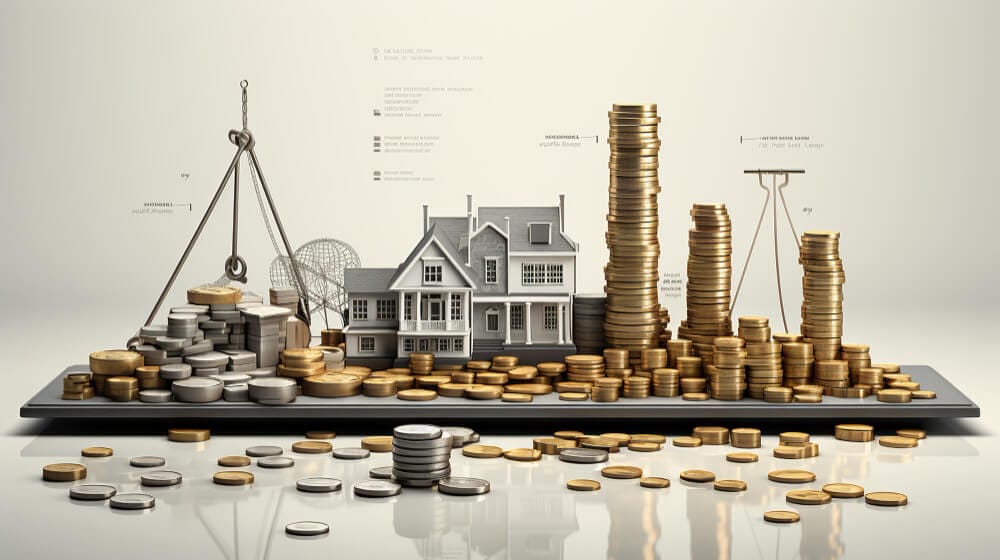Are you aware of the latest twist in the Australian construction saga? If you thought the industry was booming, think again. There’s a shocking decline in building approvals that’s shaking the foundations of real estate growth. This unexpected turn has left many scratching their heads and wondering what went wrong. Let’s dive into the nitty-gritty of this downturn and uncover the hidden truths behind the numbers.
The Current State of Australian Building Approvals
A Sudden Drop
In recent months, Australian building approvals have taken a nosedive. This isn’t just a minor dip; it’s a full-blown plunge that has caught industry experts off guard. What exactly has led to this decline? Is it a temporary blip, or are we looking at a long-term trend that could spell trouble for the economy?

Numbers That Speak Volumes
Let’s talk numbers. According to the Australian Bureau of Statistics, building approvals have decreased by a staggering percentage, leaving many projects in limbo. This sharp decline is more than just a statistic; it represents stalled projects, job losses, and economic ripples that are felt far and wide.
Factors Contributing to the Decline
Economic Uncertainty
One of the primary culprits behind the decline is economic uncertainty. With global markets in flux and domestic policies creating an air of unpredictability, investors and developers are hesitant to commit to new projects. It’s a classic case of waiting for the storm to pass, but what if the storm lingers longer than expected?
Rising Costs
Construction costs have been on the rise, making it increasingly difficult for developers to keep projects within budget. From skyrocketing material prices to labor shortages, the financial strain is real. When the costs outweigh the potential profits, it’s no surprise that approvals are dwindling.
Regulatory Hurdles
Australia’s regulatory environment is no walk in the park. Stricter zoning laws, environmental regulations, and bureaucratic red tape can slow down or even halt projects altogether. These hurdles, while essential for sustainable development, can sometimes become insurmountable obstacles for developers.
The Impact on the Real Estate Market
Stagnant Growth
The decline in building approvals has a direct impact on the real estate market. With fewer new developments in the pipeline, the supply of new properties is dwindling. This stagnation can lead to increased competition for existing properties, driving up prices and making it harder for buyers to find affordable options.
Investor Confidence
When building approvals drop, so does investor confidence. The real estate market thrives on optimism and the promise of future growth. However, the current downturn has left many investors wary, leading to a slowdown in new investments and a cautious approach to the market.
Regional Disparities
Urban vs. Rural
The decline in building approvals isn’t uniform across the country. Urban areas, which typically see higher levels of development, are feeling the pinch more acutely than rural regions. This disparity highlights the uneven distribution of economic activity and the unique challenges faced by different areas.

State-by-State Analysis
Different states are experiencing varying degrees of decline. For instance, New South Wales and Victoria, traditionally strong performers in the construction sector, are seeing more significant drops compared to states like Western Australia and Queensland. Understanding these regional nuances is crucial for grasping the full picture.
Short-Term vs. Long-Term Effects
Immediate Consequences
In the short term, the decline in building approvals means fewer jobs and a slowdown in economic activity. Construction workers, architects, and engineers are among those feeling the immediate impact. This ripple effect extends to suppliers, retailers, and other industries that rely on a robust construction sector.
Long-Term Implications
Looking ahead, the long-term implications could be even more concerning. A prolonged downturn in building approvals can lead to a shortage of housing and commercial spaces, exacerbating issues like homelessness and urban sprawl. Moreover, it can stifle economic growth and innovation in the construction industry.

Government Intervention
Policy Changes
In response to the decline, the government has introduced several policy changes aimed at revitalizing the construction sector. These include incentives for first-time homebuyers, tax breaks for developers, and infrastructure investments. But are these measures enough to reverse the trend?
Critics’ Perspective
Critics argue that while these interventions are a step in the right direction, they may not address the root causes of the decline. They point to systemic issues like housing affordability, labor market dynamics, and environmental sustainability as areas that require more comprehensive solutions.
Case Studies
Successful Turnarounds
Despite the overall decline, there are pockets of success where innovative approaches have led to positive outcomes. For example, some developers are embracing sustainable building practices and leveraging technology to streamline processes. These case studies offer valuable lessons for others looking to navigate the challenging landscape.
Lessons Learned
What can we learn from these success stories? Flexibility, adaptability, and a forward-thinking mindset are key. By staying ahead of trends and anticipating market shifts, developers can position themselves for success even in uncertain times.
The Role of Technology
Smart Construction
Technology is playing an increasingly important role in the construction industry. From building information modeling (BIM) to drones and robotics, tech innovations are transforming how projects are planned and executed. These advancements can help mitigate some of the challenges facing the industry and drive efficiency.
Sustainability and Innovation
Sustainability isn’t just a buzzword; it’s a necessity. Developers who prioritize green building practices and invest in renewable energy solutions are not only helping the environment but also creating a competitive edge. Innovation in materials and construction techniques is paving the way for a more resilient industry.

Community and Social Impact
Housing Affordability
The decline in building approvals has significant social implications. With fewer new homes being built, housing affordability remains a pressing issue. This shortage exacerbates the housing crisis, making it harder for low- and middle-income families to find suitable accommodations.
Urban Development
Urban development projects are crucial for creating livable cities. The downturn in approvals means that many urban renewal initiatives are being put on hold, impacting community development and the overall quality of life for residents.
Market Predictions
Expert Opinions
Market analysts have varying opinions on what the future holds for Australian building approvals. Some are optimistic, believing that the current decline is a temporary setback that will correct itself over time. Others are more cautious, predicting a prolonged period of uncertainty and slow growth.
What to Watch For
Key indicators to watch include government policy changes, economic trends, and shifts in consumer behavior. By staying informed and keeping an eye on these factors, stakeholders can better navigate the uncertain landscape and make informed decisions.
Conclusion
In conclusion, the shocking decline in Australian building approvals is a wake-up call for the construction industry and the broader economy. Economic uncertainty, rising costs, and regulatory hurdles are just some of the factors contributing to this downturn. The impact is being felt across the real estate market, with regional disparities highlighting the uneven nature of the decline. While government interventions and technological advancements offer some hope, the road to recovery will require a concerted effort from all stakeholders. As we navigate these choppy waters, it’s crucial to stay informed, adaptable, and forward-thinking.
FAQs
1. What caused the decline in Australian building approvals?
Several factors contribute to the decline, including economic uncertainty, rising construction costs, and regulatory hurdles. These elements combined have created a challenging environment for new projects.
2. How does the decline in building approvals affect the real estate market?
The decline leads to stagnant growth in the real estate market, with fewer new properties being developed. This can increase competition for existing properties and drive up prices, making it harder for buyers to find affordable options.
3. What are the regional differences in the decline of building approvals?
Urban areas are experiencing more significant declines compared to rural regions. States like New South Wales and Victoria are seeing sharper drops, while states like Western Australia and Queensland are somewhat more stable.
4. What role does technology play in addressing the decline?
Technology, including smart construction practices and sustainability innovations, can help mitigate some challenges facing the construction industry. By leveraging technology, developers can improve efficiency and reduce costs.
5. What are the long-term implications of the decline in building approvals?
In the long term, a prolonged decline could lead to a shortage of housing and commercial spaces, stifling economic growth and innovation. It also exacerbates issues like housing affordability and urban sprawl.




